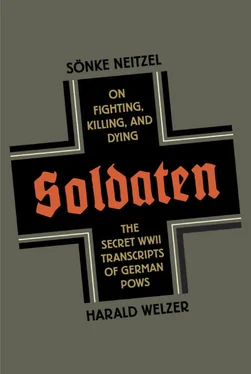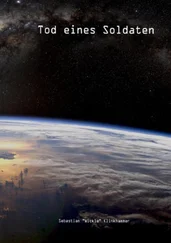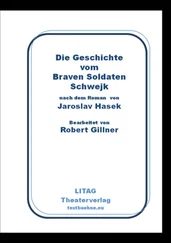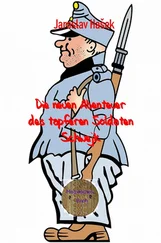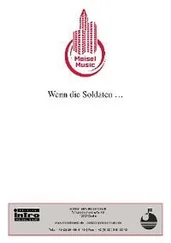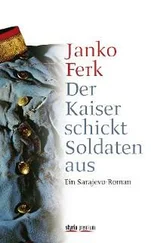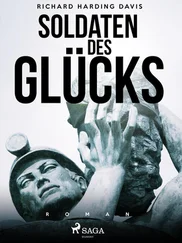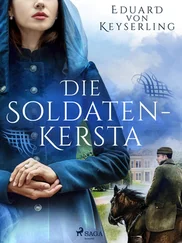SRM 8, 23 July 1940, TNA, WO 208/4136.
Hartmann, Wehrmacht im Ostkrieg, pp. 106, 237.
KTB SS Infanterie Regiment 4 (mot.), 9 December 1941–29 April 1942.
Rohrkamp, Weltanschaulich gefestigte Kämpfer .
SRGG 429, 22 September 1943, TNA, WO 208/4166; see also SRM 786, 12 August 1944, TNA, WO 208/4138.
SRM 747, 3 August 1944, TNA, WO 208/4138; Kritik auch bei Lingner, SRM 1216, February 1945, TNA, WO 208/4140.
SRM 1019, 14 November 1944, TNA, WO 208/4139; SRX 2055, 9 November 1944, TNA, WO 208/4164; SRGG 1024 (C), 2 September 1944, TNA WO 208/4168.
SRM 786, 12 August 1944, TNA, WO 208/4138.
SRGG 1034 (C), 8 September 1944, TNA, WO 208/4168.
KTB Division Großdeutschland, Aktennotiz Ia, 6–7 January 1943, S. 2, BA/MA, RH 26—1005/10.
SRM 786, 12 August 1944, TNA, WO 208/4138.
SRGG 971, 9 August 1944, TNA, WO 208/4168. On the similarities between the Waffen SS and the “Hermann Göring” Division, see SRGG 39, 16 May 1943, TNA, WO 208/4165.
SRA 2877, 5 August 1942, TNA, WO 208/4168; SRX 87, 9 June 1940, TNA, WO 208/4158; SRA 2621, 11 June 1942, TNA, WO 208/4126.
SRA 3236, 5 October 1942, TNA, WO 208/4128.
SRGG 39, 22 May 1943, TNA, WO 208/4165.
Ibid.
SRGG 971, 9 August 1944, TNA, WO 208/4165.
Henry Dicks, The Psychological Foundations of the Wehrmacht, TNA, WO 241/1.
Cited in Karl-Günter Zelle, Hitlers zweifelnde Elite, p. 209.
Lieb, Konventioneller Krieg, p. 441.
SRM 956, 10 October 1944, TNA, WO 208/4139.
GRGG 262, 18–20 February 1945, p. 3, TNA, WO 208/4177.
SRGG, 19 February 1944, TNA, WO 208/4168. The interrogation of Kurt Meyer on 15 November 1944 makes it clear how much he hated the “Bolshevists from the steppes.” SRM 1022, 15 November 1944, p. 8, TNA, WO 208/4139.
SRM 1211, 12 February 1945, TNA, WO 208/4140.
Room Conversation, Becker–Steiner, 14 February 1945, NARA, RG 165, Entry 179, Box 447.
Overmans, Deutsche militärische Verluste, pp. 257, 293–96.
Peter Lieb, “‘Rücksichtslos ohne Pause angreifen, dabei ritterlich bleiben’: Eskalation und Ermordung von Kriegsgefangenen an der Westfront 1944,” in Neitzel and Hohrath, eds., Kriegsgreuel, pp. 346–50. See also Antony Beevor, D-Day—Die Schlacht in der Normandie (Munich: C. Bertelsman Verlag, 2010).
Lieb, Konventioneller Krieg, pp. 435–48. There are numerous Allied reports in which SS men are described as “preferring to die, rather to give in.” Charles P. Stacey, The Victory Campaign: The Operations in North-West Europe, 1944–1945 (Ottawa: Queen’s Printer, 1960), p. 249.
On the Eastern Front, SS troops inflicted heavy casualties on Soviet units without suffering disproportionate losses of their own. One example was Operation Zitadelle in summer 1943. See Roman Töppel, “Kursk—Mythen und Wirklichkeit einer Schlacht,” VfZG 57 (2009), pp. 349–84, esp. p. 373ff.; Karl-Heinz Frieser et al., Das Deutsche Reich, Vol. 8, pp. 104–38.
SRGG 513, 29 October 1943, TNA, WO 208/4166.
BA/MA, RH 20—8/95, 10 August 1943.
“Panzergruppe Eberbach bei Alençon und beim Durchbruch aus dem Kessel von Falaise,” BA-MA, RH 20/7/149. This document is based on notes Eberbach made in Trent Park in October 1944.
Lieb, Konventioneller Krieg, p. 426. Major Heimann reported about a battalion of the “Leibstandarte Adolf Hitler” fighting around Aachen in October 1944: “The Obersturmführer of the Leibstandarte—they were the remnants of Leibstandarte from Aachen—Obersturmführer Rink (?) served around the same battalion commander as I did. The battalion commander once came to me—three or four days before we surrendered—and said: ‘Tonight they’re taking off.’ And in fact, the SS intended to flee. We then cautioned them that there was a direct order from the Führer to defend the city to the last, and that this order applied to the SS as well.” SRM 982, 26 October 1944, TNA, WO 208/4139.
SRM 640, 10 July 1944, TNA, WO 208/4138.
SRM 968, 18 October 1944, TNA, WO 208/4139.
In April 1944, the commanding general of the XXXXVIII Armored Corps, Hermann Balck, bitterly complained about the 9th SS Tank Division, protesting that the mid-level leadership was not up to its jobs. His anger at the commander, Obergruppenführer Wilhelm Bittrich, was such that Balck petitioned for him to be relieved of command, even though he praised Bittrich’s personal bravery. See Gert Fricke, “Fester Platz” Tarnopol, 1944 (Freiburg: Rombach, 1969), pp. 107–11, 116–19. See also BA/MA, RH 19 IV/50.
SRA 4273, 14 August 1943, TNA, WO 208/4130. On 1 February 1943 Hitler met with Field Marshal Erich von Manstein in the headquarters of Army Group South in Zaporizhia, Ukraine, and gave the go-ahead for a counteroffensive. The SS division “Leibstandarte Adolf Hitler” was also deployed.
SRM 662, 19 July 1944, TNA, WO 208/4138.
Lieb, Konventioneller Krieg, p. 428.
Letter from Eberbach to his wife, 8 July, 11 July 1944, BA/MA, MSG 1/1010.
SRA 3677, 18 February 1943, TNA, WO 208/4129.
SRX 201, 22 March 1941, TNA, WO 208/4158.
SRX 201, 22 March 1941, TNA, WO 208/4158. See also SRN 1013, 1 September 1942, TNA, WO 208/4143.
SRA 2378, 9 December 1941, TNA, WO 208/4126.
On war crimes committed in France, see Lieb, Konventioneller Krieg, pp. 15–20; on the Totenkopf division, see Charles W. Sydnor, Soldaten des Todes: Die 3. SS-Division “Totenkopf,” 1933–1945 (Paderborn: Schoeningh Verlag, 2002), pp. 76–102; Jean-Luc Leleu, “La Division SS-Totenkopf face à la population civile du Nord de la France en mai 1940,” Revue du Nord 83 (2001), pp. 821–40. On the murder of soldiers from French colonies, see Raffael Scheck, Hitler’s African Victims: The German Army Massacres of French Black Soldiers, 1940 (Cambridge: Cambridge University Press, 2006).
See SRM 892, 15 September 1944, TNA, WO 208/4139.
SRM 705, 28 July 1944, TNA, WO 208/4138.
SRM 746, 3 August 1944, TNA, WO 208/4138. Both units fought in the same division between October 1943 and January 1944.
Читать дальше
